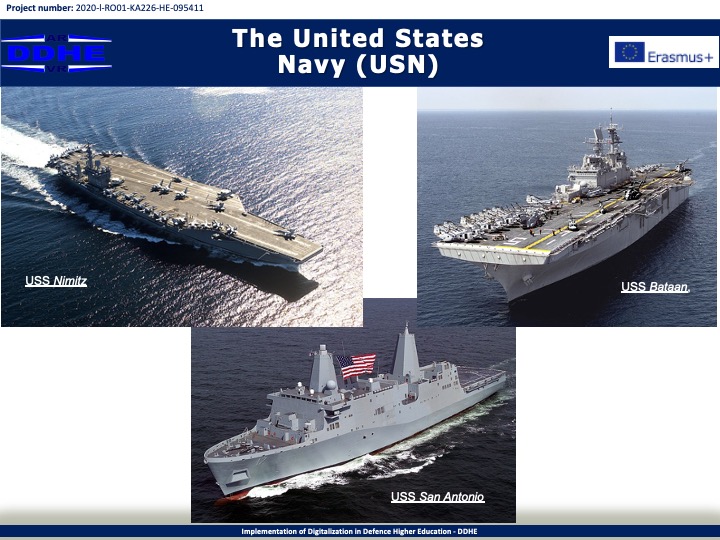Amphibious assault ships are the centerpieces of US amphibious warfare and fulfill the same power projection role as aircraft carriers except that their striking force centers on land forces instead of aircraft. They deliver, command, coordinate, and fully support all elements of a 2,200-strong Marine Expeditionary Unit in an amphibious assault using both air and amphibious vehicles. Resembling small aircraft carriers, amphibious assault ships are capable of V/STOL, STOVL, VTOL, tiltrotor, and rotary wing aircraft operations. They also contain a well deck to support the use of Landing Craft Air Cushion (LCAC) and other amphibious assault watercraft. Recently, amphibious assault ships have begun to be deployed as the core of an expeditionary strike group, which usually consists of an additional amphibious transport dock and dock landing ship for amphibious warfare and an Aegis-equipped cruiser and destroyer, frigate, and attack submarine for group defense. Amphibious assault ships are typically named after World War II aircraft carriers.
Amphibious transport docks are warships that embark, transport, and land Marines, supplies, and equipment in a supporting role during amphibious warfare missions. With a landing platform, amphibious transport docks also have the capability to serve as secondary aviation support for an expeditionary group. All amphibious transport docks can operate helicopters, LCACs, and other conventional amphibious vehicles while the newer San Antonio class of ships has been explicitly designed to operate all three elements of the Marines' "mobility triad": Expeditionary Fighting Vehicles (EFVs), the V-22 Osprey tiltrotor aircraft, and LCACs. Amphibious transport docks are typically named after U.S. cities.
The dock landing ship is a medium amphibious transport that is designed specifically to support and operate LCACs, though it is able to operate other amphibious assault vehicles in the United States inventory as well. Dock landing ships are normally deployed as a component of an expeditionary strike group's amphibious assault contingent, operating as a secondary launch platform for LCACs. All dock landing ships are named after cities or important places in U.S. and U.S. Naval history.
